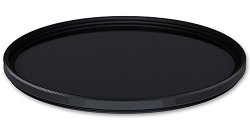Description
The Digital Nc ND8 Neutral Density Multicoated Glass Filter 62MM is a filter designed for Sony Alpha DSLR-A900 cameras. It reduces or modifies the intensity of light wavelengths, allowing photographers to adjust aperture, exposure time, and sensor sensitivity for better quality pictures. This filter has four main uses: enabling slow shutter speeds, decreasing depth of field, decreasing the effective ISO of high speed film, and allowing cine and video cameras to film bright scenes.
Neutral density filters reduce or modify the intensity of light wavelengths. This allows the photographer to choose certain combinations of aperture, exposure time and sensor sensitivity that would otherwise produce overexposed pictures
Neutral Density Filters Have Four Main Uses:- To enable slow shutter speeds, especially with high speed films, to record movement in subjects such as waterfalls, clouds or vehicles.
- To decrease depth of field by allowing wider apertures to be used, which helps separate subjects from their background.
- To decrease the effective ISO of high speed film (above ISO 400) and allow it to be used outdoors in bright situations.
- To allow cine and video cameras (which have fixed shutter speeds) to film subjects such as snow, sand or bright scenes.
